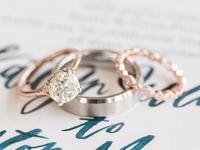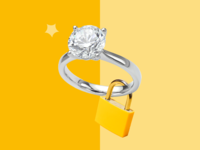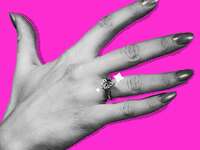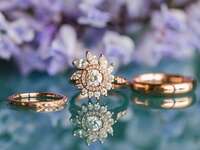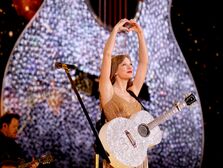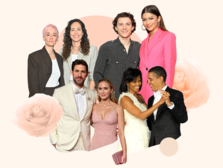A Comprehensive Guide to Every Single Engagement Ring Shape
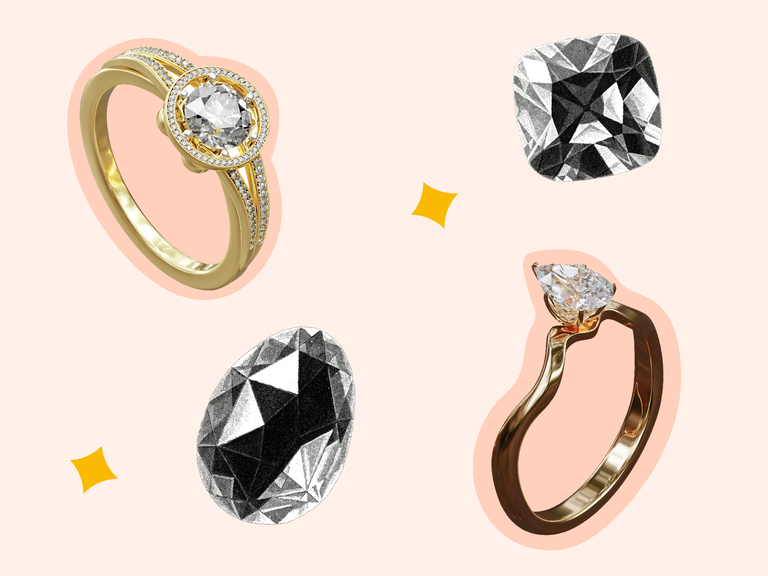
If you ask someone to describe their dream engagement ring, there's a strong chance they'll start with its shape. Why, you might wonder? An engagement ring's diamond shape is one of its most defining characteristics, so it's crucial to know the difference between Asschers and cushions, ovals and pears, and everything in between. But while it's common to assume a diamond's shape is also its cut (AKA one of the 4 C's), we'll let you in on a secret: They're completely different!
A diamond's cut refers to its internal symmetry, proportioning and polish, thus determining its brilliance (read: sparkle). The diamond shape, on the other hand, is exactly what it sounds like: the literal shape of the stone. And, believe it or not, there are plenty of shape names that you might not even recognize.
We've compiled a comprehensive list of the most popular diamond shapes, complete with design notes from industry experts. So, whether you're starting to shop for an engagement ring for your S.O. or you just want to brush up on your gemstone expertise, use this glossary to learn everything you could ever need to know about diamond ring shapes.
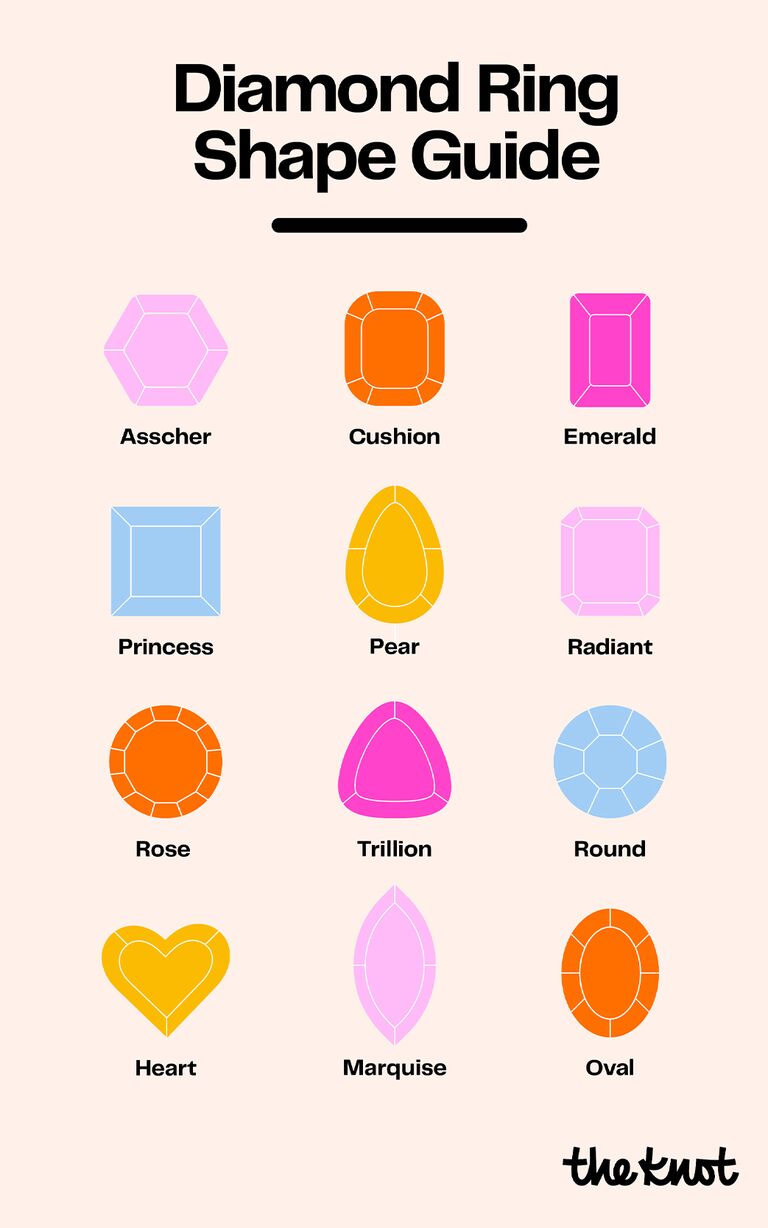
Diamond Shape vs. Diamond Cut
Before you become a certified expert in engagement ring diamond shapes, first you need to know the difference between shape and cut—because while these terms are sometimes used interchangeably, they describe two different qualities of a diamond. "According to GIA standards, 'shape' refers to the overall outline of a diamond, while 'cut' describes the arrangement of facets. This contributes to the stone's sparkle or brilliance," says Paul Atkins, a GIA-certified gemologist and store manager for Blue Nile. Dana Gordon, jeweler and founder of Dana Rebecca Designs, explains further, saying, "A cut refers to the diamond's proportions and finish. Its depth, table, crown and pavilion angles all equate to the DNA of the diamond cut."
There are a few common cuts you'll likely come across in your research, including the brilliant cut and the step cut. Generally speaking, different diamond shapes lend themselves to specific types of cuts. "Brilliant-cut diamonds such as rounds, pears or ovals have triangular and kite-shaped facets that flip-flop vertically and create the maximum brilliance that a diamond is known for," Gordon explains. "A step-cut diamond such as an emerald or Asscher has facets that are arranged parallel to each other. These appear larger and run horizontally on the diamond, which creates a cascading 'hall of mirrors' effect."
While your trusted local jeweler can further explain different diamond cuts, the key takeaway is that it determines the internal look of a diamond: "The difference in the size, shape and arrangement of facets directly affects how the diamond reflects light," Gordon adds. "This changes the visual appearance of the diamond."
On the other hand, a diamond's shape is exactly what you think it is: "The 'shape' refers to a stone's external outline or form," she says. "The round shape tends to be the most popular, while other common shapes include pear, oval and emerald."
Diamond Ring Shapes:
Asscher | Baguette | Cushion | Emerald | Heart | Marquise | Oval | Pear | Princess | Radiant | Rose | Round | Trillion | Others
Asscher Diamond Shape
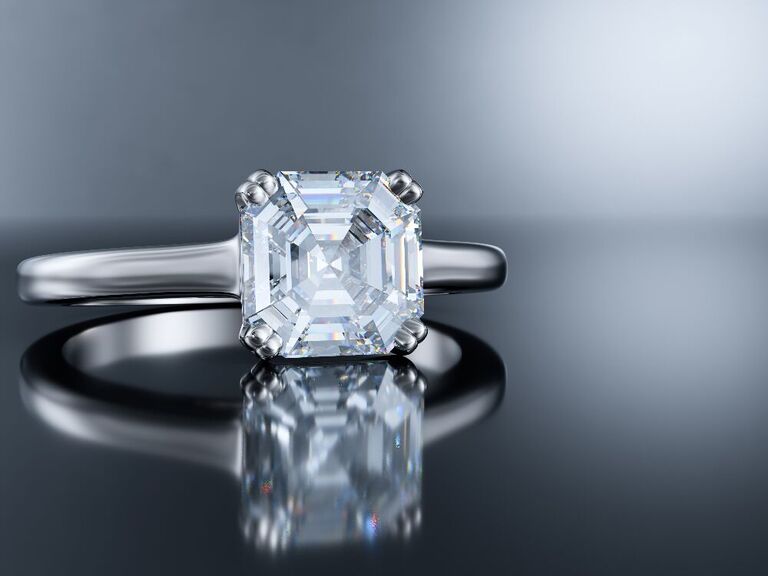
Not to be confused with an emerald diamond shape, Asscher diamonds have a square shape with deep, trimmed edges that resemble cropped corners. This particular style (which features the step cut, as referenced above) has a distinct, geometric look thanks to its parallel facets. "The Asscher's facets are arranged in an octagonal shape like a square," explains Jennie Yoon, founder of Kinn Studio. The shape generally comes in three styles: royal, classic and modern. While royal Asschers tend to be wider than modern archers, which skew more square, all three have a vintage, Art Deco-esque look.
When shopping for an Asscher diamond ring, know that its distinctly large facets can sometimes show inclusions more clearly. This requires an emphasis on clarity and cut to preserve its brilliance. "As a result, it's important to prioritize clarity or cut quality over carat size and color for deep transparency," says Mona Akhavi, CEO of VRAI.
Baguette Diamond Shape

A baguette diamond is a thin rectangle that has an elongated shape. This diamond is generally available in two styles: straight or tapered. A straight baguette has a perfect rectangular shape, while a tapered baguette has edges that angle inward. Since baguette diamonds are small, they're most often used as side stones in a setting.
Cushion Diamond Shape
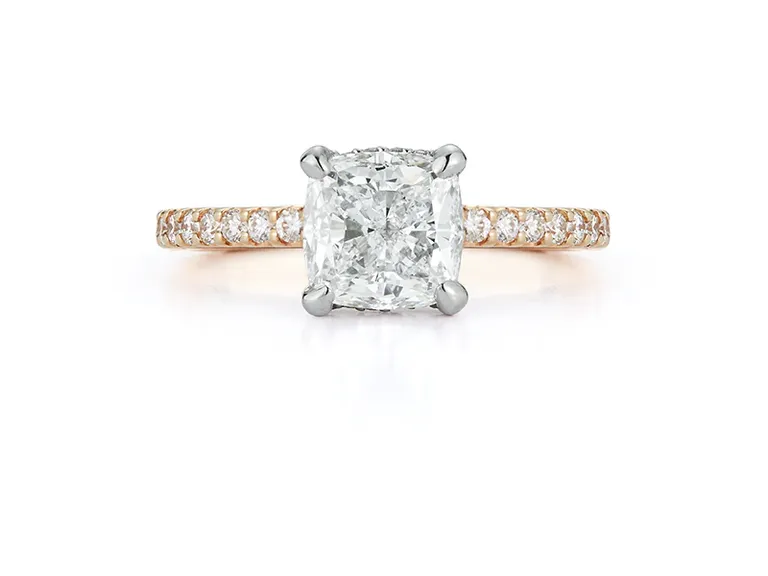
If you're looking for something structured and romantic, a cushion-shaped diamond may be right for you. "A cushion diamond has a square or rectangular shape with rounded corners," says Akhavi, noting that they also offer a lot of sparkle. "The cushion shape has about four to eight facets in its pavilion, creating a 'hearts' pattern, similar to a round brilliant-cut diamond," she adds. (Pro tip: A pavilion is the base underneath the face of the stone—it's the part of a diamond that resembles a noticeable V shape.) Plus, Akhavi notes that cushions are one of the more charming diamond shapes: "The rounded edge of a cushion has a softer, romantic feel."
Because they're available in a variety of sizes, cushion-cut diamonds give the wearer plenty of customization options. "Cushion cuts are one of our most popular fancy shapes because they are so versatile," explains Olivia Landau, founder of The Clear Cut. "They can be square, elongated, modern or antique, so many people are attracted to their versatility." And, according to The Knot 2024 Jewelry and Engagement Study, which surveyed over 7,000 recently-engaged couples, cushion stones make up 6% of all engagement rings.
Emerald Diamond Shape
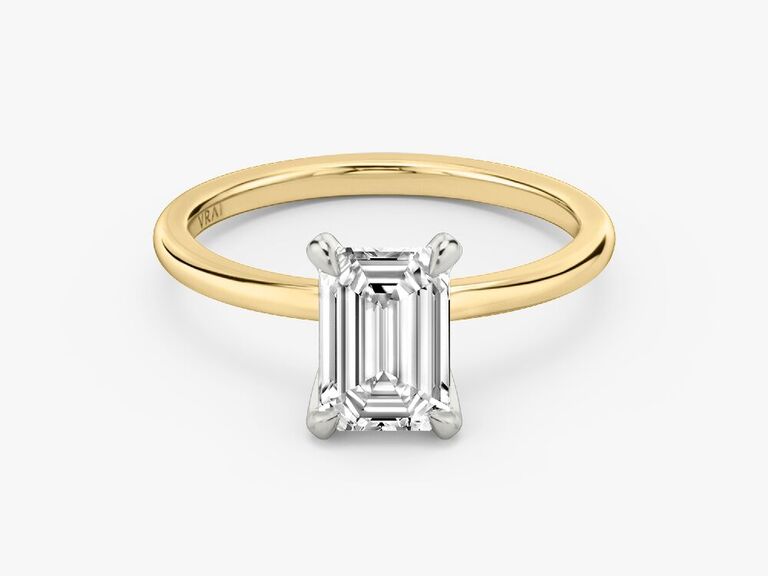
An emerald-shaped diamond is the epitome of quiet luxury—and according to our data, this shape accounts for 10% of all engagement rings. (That's up 8% since 2015!) As one of the most iconic engagement ring styles, an emerald-shaped diamond boasts clean, straight lines and that aforementioned hall of mirrors effect. "The emerald is a step-cut diamond that draws in and reflects an abundance of white and colored light, composed of 49 rectangular facets that ascend outward and descend downward," says Akhavi.
Thanks to its shallow depth, an emerald diamond often takes up more surface area on the hand, thus giving the impression of a larger diamond. "Emerald shapes may appear larger in comparison to the other shapes due to the overall depth of the cut which is exaggerated by the elongated shape, which takes up more real estate on the finger," advises Yoon. So, if size matters to you, an emerald-cut engagement ring can appear larger than its actual carat weight.
Heart Diamond Shape
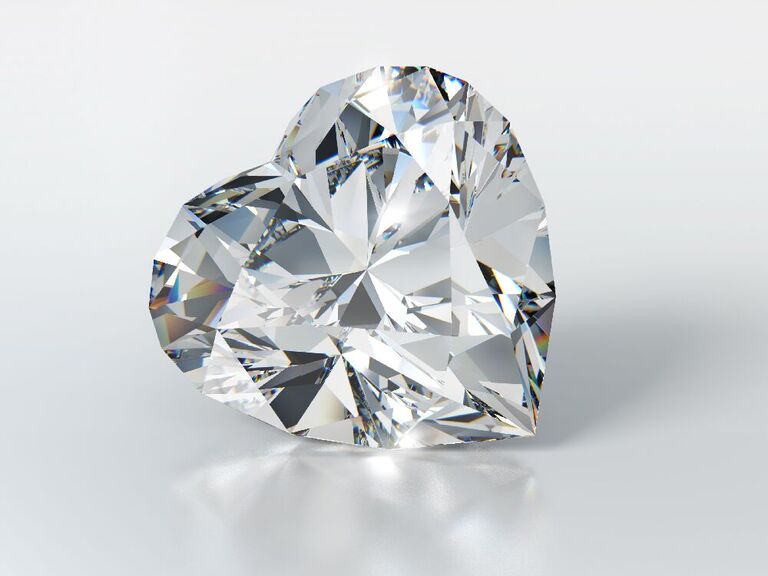
A heart-shaped diamond is exactly what it sounds like. This statement-making diamond is a literal symbol of love thanks to its romantic outline. Since heart-shaped diamonds are rarer and harder to perfect than, say, a round diamond, they can come at a higher cost. Because they're a unique fancy shape, you'll want an expertly-cut stone that's symmetrical, so prepare to spend a bit more on a heart-shaped diamond engagement ring.
Marquise Diamond Shape
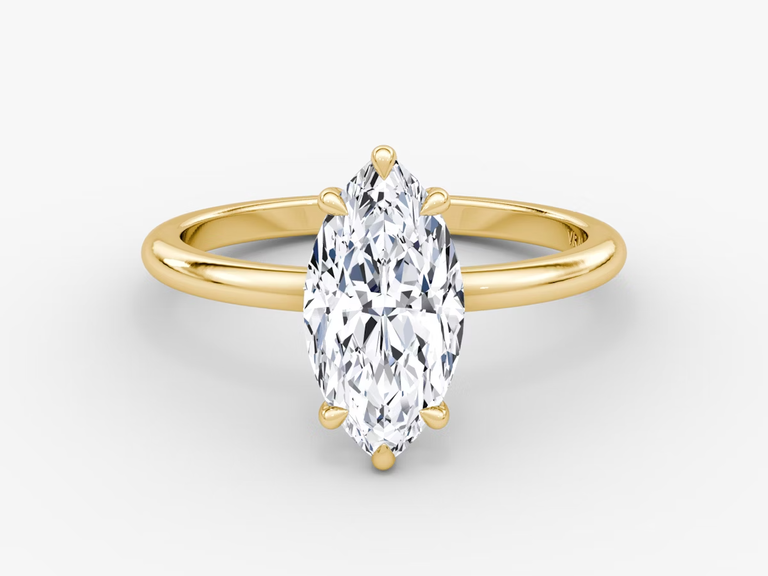
Vintage lovers may prefer a marquise, which accounts for 5% of all diamond engagement ring shapes, per our findings. This diamond shape, which was created in the 18th century, has a rich history that cements itself as a staple of antique style: King Louis XV of France hired a jeweler to make a diamond in the shape of his mistress's lips, thus creating the marquise shape.
Known for having an oblong appearance, marquise diamonds give off an antique, regal vibe thanks to their pointed edges and rounded center. Unlike ovals, which have rounded edges, marquises have a shape that more closely resembles a football. And if you're looking for a rock that shows its carat weight well, consider this. "The marquise shape has 58 facets, with 33 on the crown and 25 on the pavilion," explains Yoon. "This distribution gives the marquise a large surface area." Adds Landau: "Marquise diamonds show their carat weight well and are very finger flattering."
Oval Diamond Shape
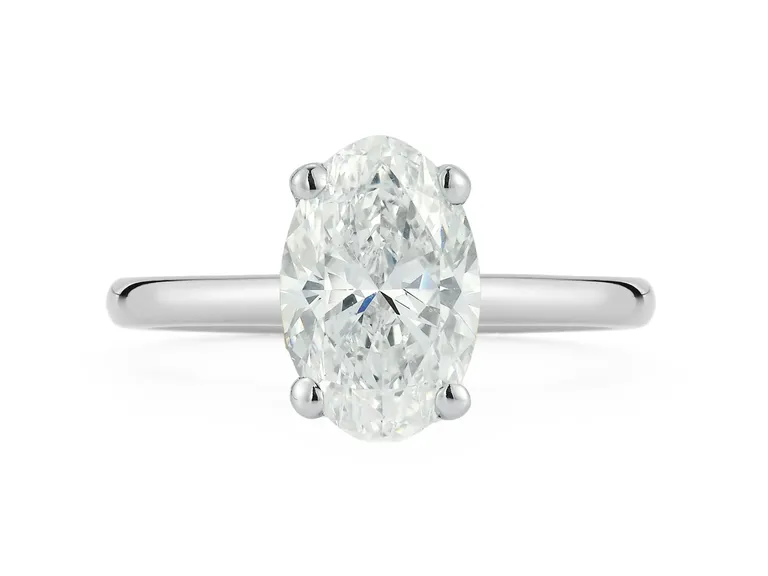
Behold one of the most popular engagement ring diamond shapes: the oval. Recently, oval-shaped diamonds have skyrocketed in popularity thanks to A-list wearers like Blake Lively, Hailey Bieber and Kourtney Kardashian. "Oval diamonds have been popular for the past few years because they show their weight well and look very feminine," says Landau. "Their elongated shape makes them flattering on any hand." This claim is data-driven too: Our study found that 25% of engagement rings are ovals, which is up from just 2% in 2015.
Much like marquise and emerald diamond shapes, an oval can appear larger than its actual size. "The oval diamond shape features a large face, prioritizing color clarity or cut quality, over carat size," says Akhavi. "This provides maximum sparkle with beautifully balanced curves that combine sleek symmetry with a soft silhouette."
Pear Diamond Shape

The pear is another fancy-shaped diamond that has risen in popularity, as it accounts for 7% of engagement rings. Also called a teardrop, a pear-shaped diamond has a pointed top that extends to a full, rounded bottom, resembling a ripe, juicy pear. And if you're looking for a trendy engagement ring that'll accentuate your hand, this shape will do just that. "A pear is shallower and thus looks larger from the top down," Akhavi shares. "This gives the finger an elongated look."
While pear diamonds have been increasingly in demand thanks to celeb wearers like Cardi B, Ariana Grande and Paris Hilton, the shape is actually quite timeless—it was the exact style Elizabeth Taylor once infamously donned, courtesy of Richard Burton.
Princess Diamond Shape

With strong, angular lines, a princess-shaped diamond offers one of the sharpest shapes on the market. "The princess shape has a geometric look with harder corners that look like a square," explains Yoon. While it does have a traditional brilliant cut, Atkins notes that princess-shaped diamonds may appear sparklier to the naked eye. "Its modified brilliant facet arrangement gives it electrifying sparkle and scintillation," he explains. At one point, this particular diamond shape was a popular choice among shoppers—but in 2024, our survey found that just 9% of engagement rings have a princess shape, which has decreased by 13% since 2015.
Radiant Diamond Shape
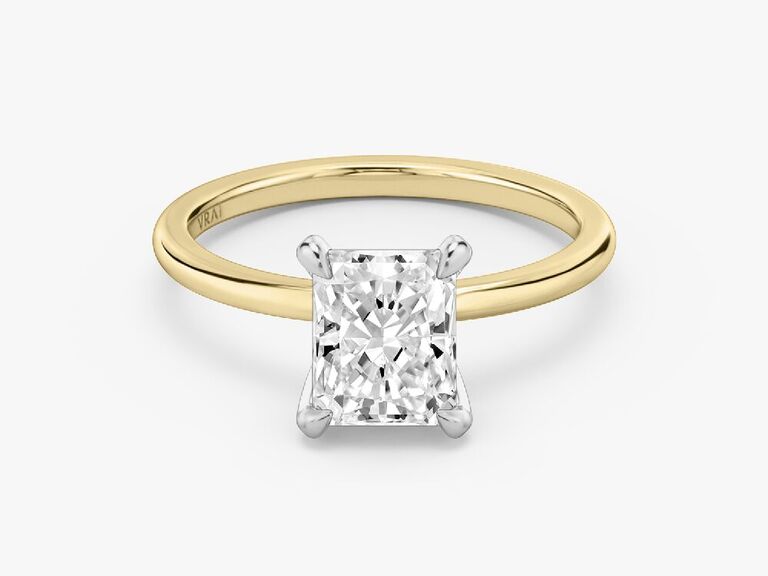
If you're looking for the sparkliest stone, a radiant diamond is just your style. As one of the newer diamond shapes (it first debuted in the 1970s), a radiant-shaped diamond features an intricate facet pattern that emphasizes brilliance. "It boasts the fire of a round brilliant cut diamond in a rectangular or square shape with cropped corners," Atkins explains. The stone's face is structured with square edges, and it features 70 facet cuts that allow light to reflect from all angles, creating a bright, scintillating effect.
It's common to confuse a radiant diamond with an emerald diamond, but the difference lies in the facet patterns. "While both styles have the same rectangular body and clipped corners, an emerald is a step cut, so it has long, skinny facets, while a radiant has a brilliant faceting pattern," says Akhavi.
Rose Diamond Shape

Much like its name implies, a rose diamond resembles the petals of its floral namesake. Since this was one of the very first diamond shapes ever created, it was once cut by hand with fewer facets, which explains why it looks different from modern cuts. This diamond cut is much different than a traditional brilliant diamond, which categorizes most of the other diamond shapes on this list. While a brilliant diamond has a pavilion in a pointed "V" shape that allows light to reflect off the facets, a rose diamond does not have a pavilion. Instead, the flat bottom creates a look that's more glassy and lustrous than it is sparkly. You'll also be able to recognize a rose diamond shape thanks to its distinctive triangle facets on the face.
Round Diamond Shape
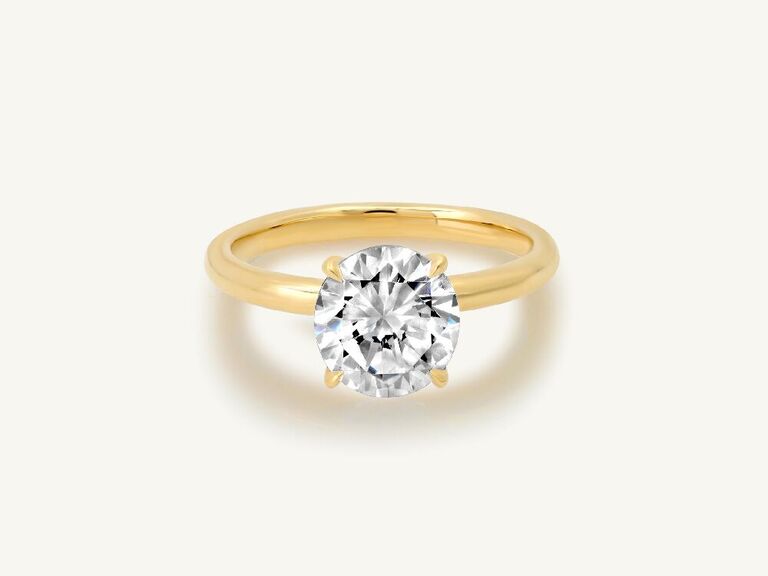
If you're not sure what the perfect diamond looks like for your S.O., you can't go wrong with a round diamond shape. After all, there's a reason this is the most popular shape on the market. Not only is a round engagement ring diamond shape incredibly versatile, it's also timeless. Most, if not all, jewelers report that solitaire round engagement rings are their most popular sellers year after year. "The round brilliant is an enduring classic with the perfect balance of proportion and symmetry," Akhavi shares. Adds Landau: "Our clients love round brilliants because they are the most sparkly and brilliant, and they show their weight well too." This is reflected in our data too, as round diamonds account for 28% of engagement rings.
Available in a variety of sizes and at a number of price points, a round diamond is easy to source within your budget. This common diamond shape is also easily customizable, as a variety of settings, halos and side stone designs will complement its simplicity.
Trillion Diamond Shape

Unlike any other engagement ring diamond shape in this list, a trillion stone has a unique triangle shape. Its three equal sides come together to create a bold, sharp look with intense brilliance. While trillions are often used as side stones, they can also be fashioned as a unique solitaire center stone for a sparkler that's completely individual.
Other Diamond Shapes
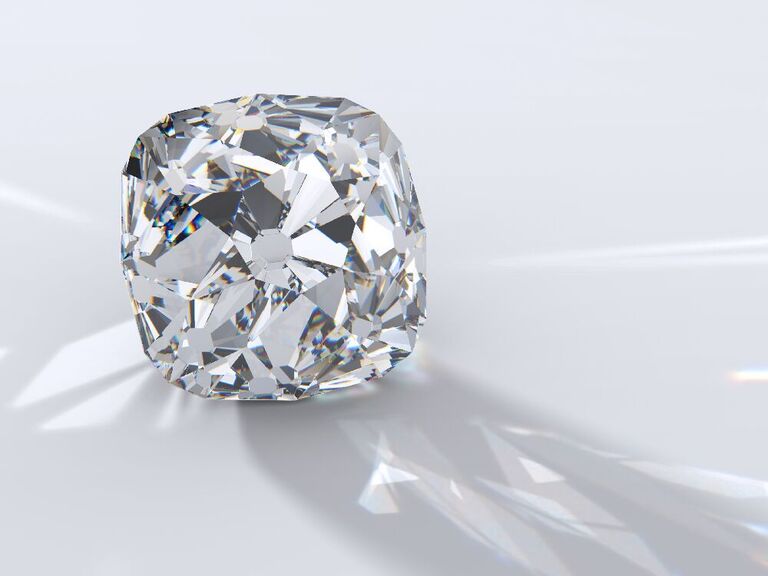
While we've outlined the most common engagement ring diamond shapes above, these just barely scratch the surface. There are plenty of different shapes that go beyond the basics. A hexagon shape, for example, resembles an Asscher diamond with six straight sides. Similarly, an angular kite diamond marries the oblong shape of a marquise with the step cut pattern that's associated with emeralds. While this shape is most commonly used for side stones, it's becoming a trendy center stone option as well.
Antique shapes—like old mines and European diamonds—have also risen in demand. Prior to the creation of the modern technology that produces the brilliantly cut diamonds we know today, jewelers used to cut stones by hand. This process resulted in facets and faces that look much more antique than what often hits showrooms now. As a result, antique shapes like old mines and European diamonds draw the eye inward rather than reflecting light out. "Old European and old mine cuts have recently become more popular among our shoppers," Landau says. "Our clients love them because they have an antique look and are super rare. Each stone has a unique faceting pattern, so no two are the same. Plus, they're a great value because you can go lower in color without compromising the quality."
So, with a seemingly endless list of diamond shapes, it can feel downright impossible to pick just one. If you find yourself wondering, "What diamond shape is best for me?" you can't go wrong by heading to a jeweler's showroom to try on multiple diamond shapes and see what fits your preference. "Be open to various shapes—even the ones that may not necessarily have been on your initial list," advises Yoon. "Each diamond is unique, and so is your hand."

